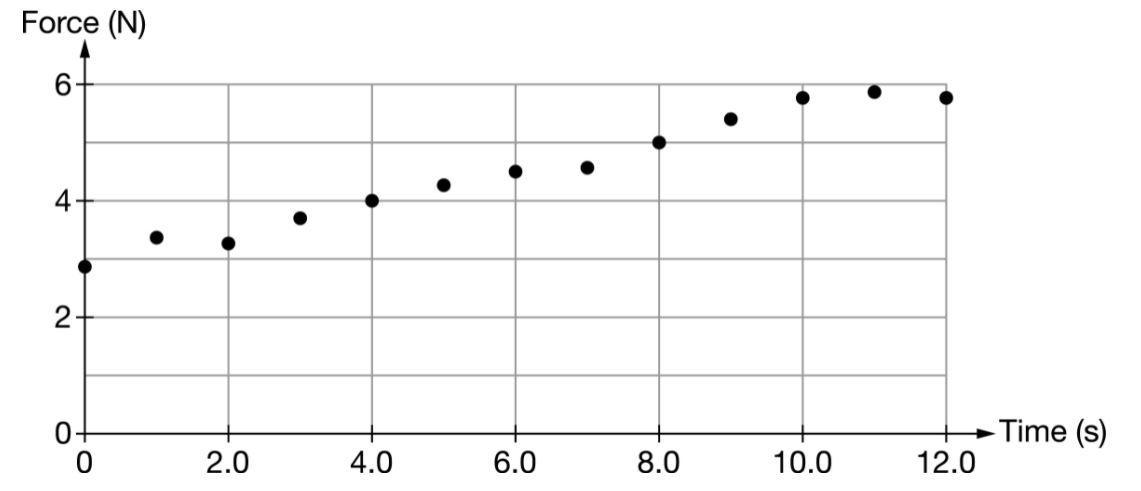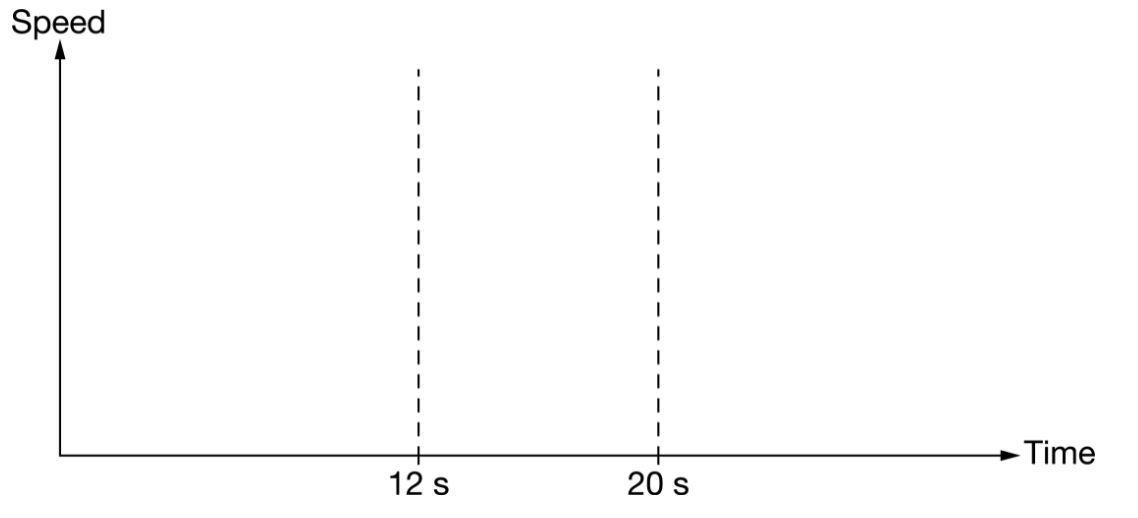Question
Students are running an experiment to determine the mass of a block without using a scale. The students set up a block on a horizontal
Students are running an experiment to determine the mass of a block without using a scale. The students set up a block on a horizontal surface of negligible friction. They then attach a force sensor to the block that is at rest. The sensor is then used to exert a force on the block, moving it along a straight line. The force exerted as a function of time is shown in the graph above. At time t=12s, the block is moving at 1.5m/s.

(a)
i. Explain how the students could use the graph to estimate the impulse exerted on the block.
ii. Calculate the estimated impulse exerted on the block for the time interval 0 to 12 seconds.
(b) Calculate the mass of the block.
When t=12s, the force sensor loses contact with the block, which continues to move along the horizontal surface. When t=20s, the block encounters a rough area and comes to rest in 25cm.
(c) On the graph below, sketch a graph of the speed of the block as a function of time.

(d) Calculate the coefficient kinetic of friction between the block and the rough surface.
(e) The students repeat the experiment with a block that has twice the mass of the original block. The students exert the same average force to the block. The students again get the block to move with a speed of 1.5m/s.


Force (N) 6 2 Time (s) 0 2.0 4.0 6.0 8.0 10.0 12.0
Step by Step Solution
3.32 Rating (152 Votes )
There are 3 Steps involved in it
Step: 1

Get Instant Access to Expert-Tailored Solutions
See step-by-step solutions with expert insights and AI powered tools for academic success
Step: 2

Step: 3

Ace Your Homework with AI
Get the answers you need in no time with our AI-driven, step-by-step assistance
Get Started


